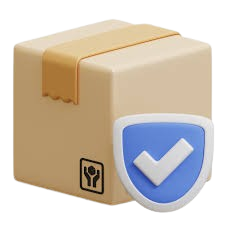How Busy Families Are Rewriting Meal Plans for Back‑to‑School Calm
The 5 p.m. scramble is familiar: backpacks, homework, and a hungry family waiting at the table. For many moms, that daily pressure adds up — eating into patience, time, and often sleep. Meal planning that actually fits a school-year schedule is now a quiet lifeline for households trying to keep evenings calm, healthy, and sane.
What’s new — and why this matters now
Busy families are rethinking weekly dinners to match tighter schedules, after‑school activities, and growing homework piles. This fall, parents are swapping one‑off dinners for simple, repeatable meal templates that cut decision fatigue and food waste. Minimalist moms swear by a three‑slot plan — proteins, bowls, and one‑pan nights — that rotates weekly and frees up mental space for the rest of family life.
The home-life connection
A kitchen that supports quick, consistent meal routines directly lowers stress and improves family nourishment. When meal planning works, evenings are smoother, kids eat more predictably, and parents reclaim small pockets of calm.
- Messy counters: affect focus & meal prep time
- Disorganized storage: increases stress and clutter
- No routine: leads to late meals and frazzled evenings
Why women 30+ feel this most
By our 30s and beyond, expectations grow: careers, kids’ schedules, grandparents’ needs, and the invisible labor of keeping everyone fed and on track. That juggling act makes effortless meal plans feel like a superpower. Short windows between work and bedtime mean solutions must be practical, aesthetic enough to calm the room, and durable for real family life.
Acknowledging multitasking and emotional labor isn’t trendy — it’s necessary. A simple system reduces cognitive load, creates consistency for kids, and allows moms to pause rather than sprint through dinner routines.
Try This at Home: 4-Point Reset
- Declutter in zones: One drawer or shelf at a time
- Use family rhythms: Set a weekly tidy hour
- Visual calm: Choose matching containers or neutral tones
- Keep it visible: A visible reward (like flowers or fruit) makes cleaning worth it
How Momamoma Can Help
Designed for real life, Momamoma offers home tools that blend beauty, function, and family needs.
- Space-saving organizers
- Neutral-toned kitchen tools
- Easy-to-clean essentials for busy routines
- Curated for calm, minimal living
FAQs
What’s the easiest way to start organizing my kitchen?
Begin with a single drawer or shelf and use stackable or clear bins. Pair that with a simple meal template (e.g., protein + veggie + grain) so you use what’s accessible first.
How do I build a weekly cleaning rhythm with kids?
Use music, visuals, and short 10-minute bursts — not long tasks. Make a chart with 3–4 small jobs per child and celebrate completion with a family ritual, like a tidy-up high five or a small dessert after dinner.
Do I need matching containers for a tidy kitchen?
No, but neutral colors reduce visual stress and help create calm. Uniform containers also make meal prep and leftovers easier to see and organize, saving time during busy evenings.
Sources
- American Psychological Association – Effects of clutter on mental well‑being
- Real Simple – Minimalist kitchen tips for busy families
- The New York Times – Back‑to‑school strategies for family routines



